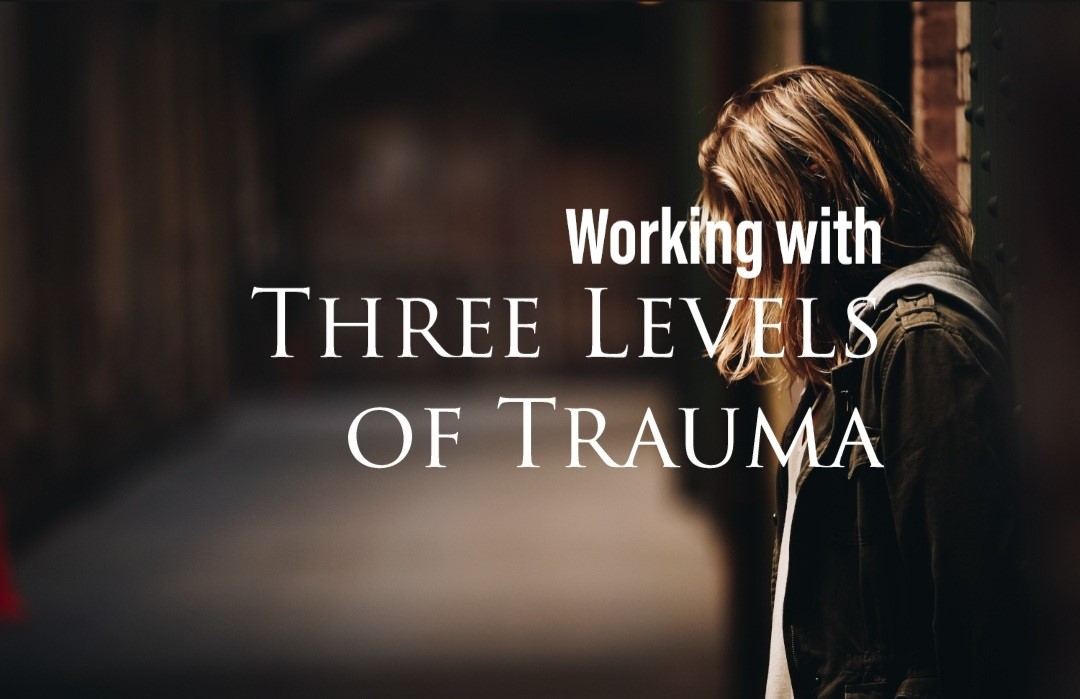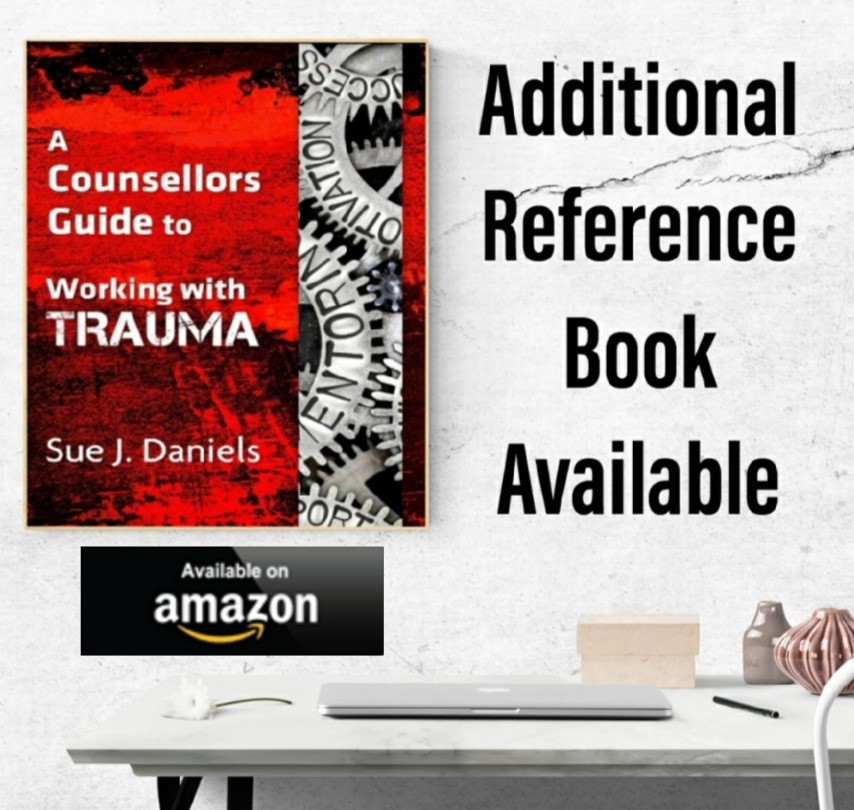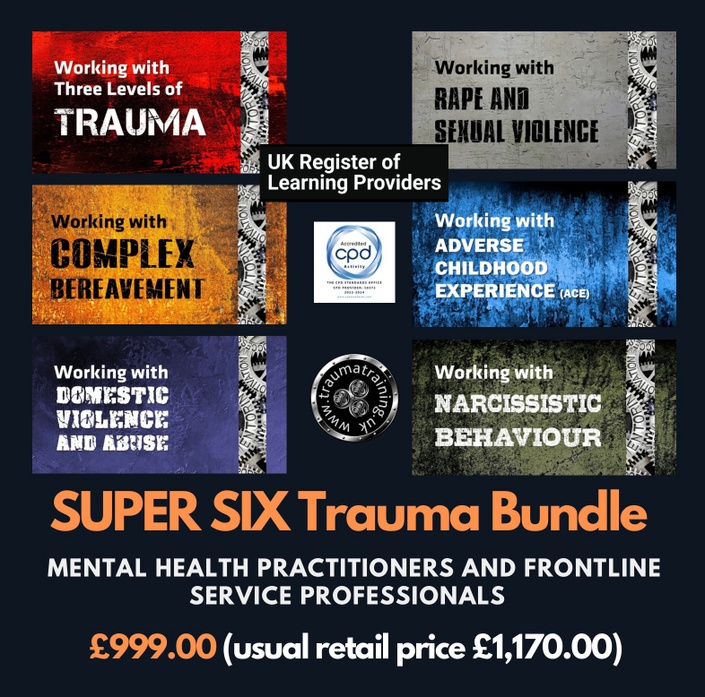All reactions to trauma are normal reactions to an abnormal event and are easily understood in relation to the ‘fight, flight or freeze’ response.
When a deeply traumatic event occurs the emotional reaction can be so strong that it remains encoded in wordless form in the Amygdala, permanently retained there as a survival pattern in case it is suddenly needed in a similar emergency.
When working with clients in everyday practice we need to be watchful of the patterns from previous traumas and how they manifest in the clients current day to day thinking patterns. These are automatic protectors in that they shield the client from further harm, whilst surviving and working with recovery.
PTSD affects hundreds of thousands of people who have been exposed to violent events such as rape, domestic violence, child abuse, war, accidents, workplace incidents, natural disasters, bullying, childhood sexual abuse, taken hostage, kidnap, torture and many other situations. It is normal to be affected by trauma.
All of our CPD Training Courses are interchangeable. NB: Some of the lessons from the other courses are replicated in the Working with Three Levels of Trauma Course, this is purely to enhance intensity and integrity of the topic and of the course information.
Banner Photo by Eric Ward from Unsplash.com
Left: Photo by Andres Ayrton from Pexels.
Self – Care Management for Online Trauma Training & Learning
We only have so much time in the day. Some of the content in all of our CPD online trauma training can be heavy going, especially the case history content. It can be easy to become overwhelmed, which is why we have prepared this brief document.
In order to manage your time, you can plan and organise the learning activities that you intend to complete. For some learners, they may already have the information contained within the course, but need to refresh that knowledge, others they may like to take their time, absorbing new information and processing that learning.
Finding your own way to manage your learning time can be extremely beneficial. There are no deadlines for our courses, once you have purchased the chosen course, you have all the time you need to complete it. The content is reading, understanding and completing a series of multiple choice questions after each module. Once accomplished, if you have achieved a 75% pass, you can automatically download your Certificate of Achievement accredited by the CPD Standards Office.
Seven bullet points that may help…
1. Keep a schedule or to-do-list – set your own deadlines.
2. Prioritise and focus on your highest objective within your list.
3. Set blocks or allocate time for specific modules.
4. Take as many breaks as you feel you need.
5. Prepare to make notes, research further into links provided.
6. Learn how to recognise distractions, multi-tasking, background noise and self-derailing.
7. Reward yourself often and purchase a fitting frame for your new certificate.
We hope that these few steps will be of some assistance to you when completing any of the CPD Trauma Training courses. Arranging time for yourself to complete your chosen course can be crucial to your absorption of any new information. Above all, stay focused and although these are heavy in places, we hope that you enjoy the journey.
Once you have passed and downloaded your Online Completion Certificate, if you send us an appropriate postal address, we will send you the additional CPD Accreditation Certificate alongside your CPD Course Completion Certificate.
We are always interested to see photographs of your certificate/s, whether that is on your private practice wall, in a folder or at your place of work. If you would like to send us yours, please send to us via the website contact access.
Aims ~ Objectives ~ Learning Outcomes
Aims ~Achievement
To provide information about current practice and pre - therapy intervention.
To enhance and refresh current knowledge in addition to core counselling/health practitioner training.
To develop skills and intervention processes in addition to current training to assist with the best possible outcomes for clients.
Objectives ~ Presentation
To present current working practices around the course subject.
To provide clear, concise and researched information that enhances and improves skills sets.
To demonstrate different ways of working to suit different client needs.
Learning Outcomes ~ On Completion, Learners should be able to:
To have an informed understanding of what a client affected by trauma, may have to endure as well as and in addition to the event.
To be able to explain the procedures that are involved within varying levels of traumatic incident.
To identify the service needs of different types of clients: when to work with those needs and when to refer on.

Course Curriculum
- Module 1 - Terror in the Brain
- Module 2 - Initial Assessment & Psycho - education
- Module 3 - Pre - Therapy Intervention & Goal Setting
- Module 4 - PTSD and Associated Symptoms
- Module 5 - Bullying & Intimidating Behaviours
- Module 6 - Self Harming & Destructive Behaviours
- Module 7 - CISD (Critical Incident Stress Debriefing) & TRiM (Trauma Response Management)
- Module 8 - Reflective Case Histories
- Module 9 - Traumatic Child Birth & Neonatal Loss
- Module 10 - Aftermath of Suicide
- Module 11 - Complex Grief Patterns
- Module 12 - Psychological First Aid
- Module 13 - Stress ~ Burnout ~ Psychosis
- Module 14 - Road Traffic Collision (RTC)
- Module 15 - Funeral Systems
- Module 16 - Reflective Case Histories
CPD - courses available
All of our CPD courses are available to enrol and complete in the comfort of your own home or place of work. They each feature a similar format in that they have multiple choice questions for course completion.





